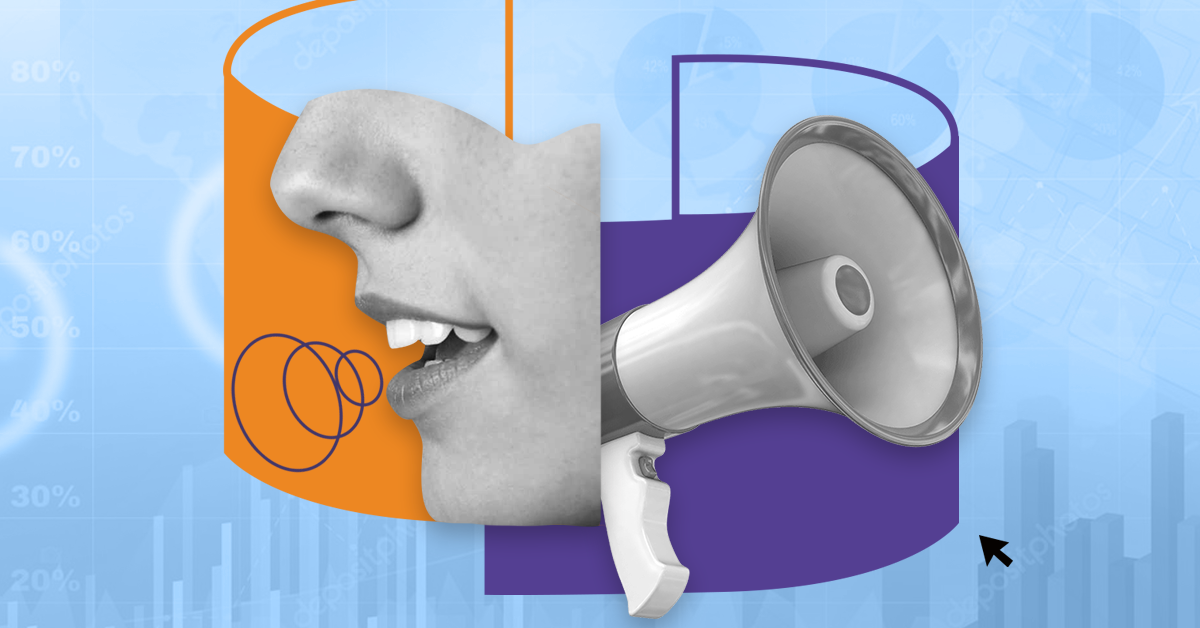Brand Marketing Vs. Performance Marketing: What Is The Difference?

Which is more effective—brand marketing or performance marketing?
A recent article from Harvard Business Review suggests that brand and performance marketing aren’t mutually exclusive. In fact, it says that pitting them against each other reduces the effectiveness of both.
Failing to invest in your brand could erode brand loyalty over time, meaning customers are less likely to buy your products or solutions.
On the other hand, only investing in your brand means you fail to capitalize on the good relations you have built with audiences. You are missing out on the sustained revenue that performance marketing techniques generate.
According to the Harvard Business Review article, the two approaches should be used together to increase brand equity. The authors recommended using KPIs to measure progress toward this goal.
We agree with this perspective. At OpenMoves, we focus on performance marketing. But we’re always looking for brand marketing opportunities for our clients too and we believe that this is a critical strategic layer.
This article explains some of the techniques you can use to do that.

Brand marketing and performance marketing defined
Brand: What your business stands for, who it’s for, and what you can offer them. Your marketing communicates your brand via its visual appearance, the way it communicates, and the channels it uses.
Brand marketing: The methods you use to increase brand awareness and build relationships with potential customers. It usually addresses the total addressable market—in other words, anyone who could conceivably buy your product. Brand marketing campaigns can target customers at all marketing funnel stages and generate results slowly over time.
Examples of brand marketing include:
- Content marketing
- Print ads
- Radio and TV ads
- Social media engagement
- Podcasting
- Developing free useful apps
Performance marketing: These marketing techniques use data to create campaigns that encourage audiences to take action. They are usually used to generate leads and convert sales. They often target qualified prospects at the bottom of the funnel. These campaigns typically produce results quickly, but their impact is usually short-term.
Examples of performance marketing techniques include:
- PPC ads
- Email marketing
- Social media ads
- SEO marketing
Share of Voice
Share of voice (SOV) is a great way to measure your brand. It represents the proportion of your industry’s marketing and advertising space that your brand controls compared to your competitors.
It isn’t necessarily a performance marketing metric in itself. But you can use performance marketing measurements in your SOV calculations.
SOV can be calculated based on various factors, such as the number of ad impressions, mentions, or media coverage that a brand receives compared to others.
- Identify the platforms and channels where your brand is active.
- Set up monitoring tools like Google Alerts, social media listening tools, or brand monitoring platforms to spot brand mentions in conversations.
- Calculate the total number of brand mentions across all platforms for a specific time frame. Don’t forget to include both organic and paid mentions. Then, do the same for your competitors.
- Divide your brand’s total mentions by the industry’s total mentions (yours and your competitors). Multiply the result by 100 to calculate the share of voice percentage.
A higher percentage means your brand is dominating the conversation, while a lower percentage suggests room for improvement.
3 Performance Marketing Metrics to Track Brand Equity
Here are three performance marketing techniques that can be used as KPIs to measure brand equity:
- Web search traffic
Google Trends is a valuable tool for measuring brand equity online. It enables you to see how many people have used the search engine to look up your brand or related keywords and how that interest has changed over time.
Here are some of the things Google Trends can measure:
- Interest: The more people who search for your brand online, the greater the level of consumer interest and awareness. This in turn suggests a stronger brand presence and potentially higher brand equity.
- Related keywords and topics: By tracking keywords associated with your brand, you can evaluate specific trends, interests, or consumer needs. This analysis helps identify opportunities to align with consumer preferences and extend your brand reach.
- Competitor comparison: Comparing the search volume of your brand with that of competitors can determine its relative strength in the market, indicating whether it is gaining or losing ground.
- Geographic reach: Google Trends enables marketers to identify geographic regions where the brand enjoys strong popularity. This information allows you to enhance brand equity by running campaigns in countries where you already resonate with consumers.
You can also use SEO tools like Ahrefs to measure search volume on a daily or even monthly basis. Google Search Console can be used to track how people interact with individual pages, allowing you to see what content has driven visitors to your site.
- Social mentions
By tracking mentions across platforms like Twitter, Facebook, and Instagram, marketers can gauge their brand visibility and awareness.
Here are some of the things that can help you measure brand equity:
- Engagement levels: Comments, shares, and likes, demonstrate that people are actively engaging with your brand’s content.
- Sentiment analysis: Engagement is good for brand awareness, but doesn’t mean people necessarily like your brand. That’s where brand sentiment comes in. By weighing positive mentions against negative ones, marketers can understand brand perception and identify areas for improvement.
- Influencer impact: Often on social media, how many people mention your brand isn’t as important as who mentions it. By identifying influencers and key opinion leaders who talk about your brand, marketers can build further relationships that will contribute towards performance marketing and brand equity.
- Competitive Analysis: Like with Google Trends, monitoring social media mentions of competitors allows you to compare your brand’s performance to that of competitors. But unlike Google Trends, social media allows you to make a richer comparison using factors like sentiment.
- Backlinks
Backlinks are when another website links to your content. Most people choose to link to your content because they think it is:
- Trustworthy
- Relevant to current events
- Interesting
- Valuable
This makes backlinks a great metric for measuring brand equity.
Here are some ways that the quality of backlinks can be measured:
- The number of backlinks: The more pages that link to your website, the better.
- Number of linking domains: It’s generally more valuable to get one link each from three different websites than it is to get three links from one website.
- Authority of linking domains: SEO tools like SEMRush and Ahrefs assign an authority score to websites. This is a measure of how many backlinks are pointing to that site. High authority links are worth more than low authority ones.
- The relevance of linking domains: Backlinks from websites that are relevant to your industry are generally more valuable than those that are not. This factor is difficult to quantify but is still worth considering.
The best way to measure the number of backlinks pointing to your website is via Google Search Console. However, you can also use tools like Ahrefs. These are less accurate, but they can give you more detail about the links pointing to your website.
Performance Marketing Case Study: Atlas Obscura
Atlas Obscura is a global travel community offering a range of publications, trips, and online courses.
Atlas Obscura’s complex offering, combined with global economic issues and a suppressed travel industry, meant the company was struggling to hit financial performance targets.
The company came to OpenMoves. They requested our help with:
- Increasing trip sales
- Growing course and experience sales
- Generating awareness and top funnel engagement
- Creating campaigns that can flexibly respond to demand, available inventory, and changing global conditions to promote the right offers at the right time
This campaign included several performance marketing elements. For example we:
Used machine learning to power social ads: We used AI with Google Ads and Facebook Ads to deliver the right ads to the right audiences. We targeted broad audiences and then let the AI algorithms identify and target relevant buyers for different trips and courses.
Increased ad performance through diversified creative messaging: By showing paid social audiences a range of creative messaging we incrementally improved ad performance compared to single-ad audiences.
But we knew that brand is key in the travel industry—mainly because the user journey from awareness to purchase can take months. It was therefore important to include brand marketing elements in this campaign.
Top-of-the-funnel brand activity would be highly profitable as it would help drive longer-term engagement. But it is also hard to measure. We built campaigns on Google Ads and Facebook Ads that included awareness, prospecting, and remarketing elements.
These were measured across total web lift and across different attribution models to track success.
The results
- 70% Lift in YoY e-commerce revenue in Q1 2022
- 100% Lift in YoY e-commerce conversion rate in Q1 2022
- 100% Improvement in user engagement from Google Ads
- 20m+ Users reached profitably on FB and IG
Why this campaign was successful
While this was ultimately a performance marketing campaign, we didn’t underestimate the importance of branding. We used a full-funnel approach, taking social media users from awareness to purchase—this resulted in more customers than we would have achieved if we focused purely on bottom-of-the-funnel conversions.
Make Your Performance Marketing Campaigns More Effective with OpenMoves
If you want to improve your performance marketing campaigns or better integrate them with brand marketing, get in touch today.
Our veteran specialists are experts in all PPC platforms, including Google Ads, and Facebook ads. We’ll help you target buyers and customer segments, identify opportunities, and increase ROI.












